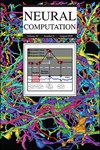A Noise-Based Novel Strategy for Faster SNN Training
IF 2.7
4区 计算机科学
Q3 COMPUTER SCIENCE, ARTIFICIAL INTELLIGENCE
引用次数: 0
Abstract
Spiking neural networks (SNNs) are receiving increasing attention due to their low power consumption and strong bioplausibility. Optimization of SNNs is a challenging task. Two main methods, artificial neural network (ANN)-to-SNN conversion and spike-based backpropagation (BP), both have advantages and limitations. ANN-to-SNN conversion requires a long inference time to approximate the accuracy of ANN, thus diminishing the benefits of SNN. With spike-based BP, training high-precision SNNs typically consumes dozens of times more computational resources and time than their ANN counterparts. In this letter, we propose a novel SNN training approach that combines the benefits of the two methods. We first train a single-step SNN(T = 1) by approximating the neural potential distribution with random noise, then convert the single-step SNN(T = 1) to a multistep SNN(T = N) losslessly. The introduction of gaussian distributed noise leads to a significant gain in accuracy after conversion. The results show that our method considerably reduces the training and inference times of SNNs while maintaining their high accuracy. Compared to the previous two methods, ours can reduce training time by 65% to 75% and achieves more than 100 times faster inference speed. We also argue that the neuron model augmented with noise makes it more bioplausible.基于噪声的SNN快速训练新策略
脉冲神经网络(SNNs)因其低功耗和强生物合理性而受到越来越多的关注。snn的优化是一项具有挑战性的任务。两种主要的方法,人工神经网络(ANN)到snn的转换和基于峰值的反向传播(BP),都有各自的优点和局限性。ANN到SNN的转换需要很长的推理时间来近似ANN的精度,从而削弱了SNN的优势。使用基于峰值的BP,训练高精度snn通常比人工神经网络多消耗数十倍的计算资源和时间。在这封信中,我们提出了一种新的SNN训练方法,它结合了两种方法的优点。首先用随机噪声近似神经电位分布,训练出单步SNN(T = 1),然后将单步SNN(T = 1)无损地转换成多步SNN(T = N)。高斯分布噪声的引入使转换后的精度显著提高。结果表明,该方法在保持snn高精度的同时,大大减少了snn的训练和推理时间。与前两种方法相比,我们的方法可以减少65%到75%的训练时间,并实现100倍以上的推理速度。我们还认为,加入噪声的神经元模型使其更具生物合理性。
本文章由计算机程序翻译,如有差异,请以英文原文为准。
求助全文
约1分钟内获得全文
求助全文
来源期刊

Neural Computation
工程技术-计算机:人工智能
CiteScore
6.30
自引率
3.40%
发文量
83
审稿时长
3.0 months
期刊介绍:
Neural Computation is uniquely positioned at the crossroads between neuroscience and TMCS and welcomes the submission of original papers from all areas of TMCS, including: Advanced experimental design; Analysis of chemical sensor data; Connectomic reconstructions; Analysis of multielectrode and optical recordings; Genetic data for cell identity; Analysis of behavioral data; Multiscale models; Analysis of molecular mechanisms; Neuroinformatics; Analysis of brain imaging data; Neuromorphic engineering; Principles of neural coding, computation, circuit dynamics, and plasticity; Theories of brain function.
 求助内容:
求助内容: 应助结果提醒方式:
应助结果提醒方式:


